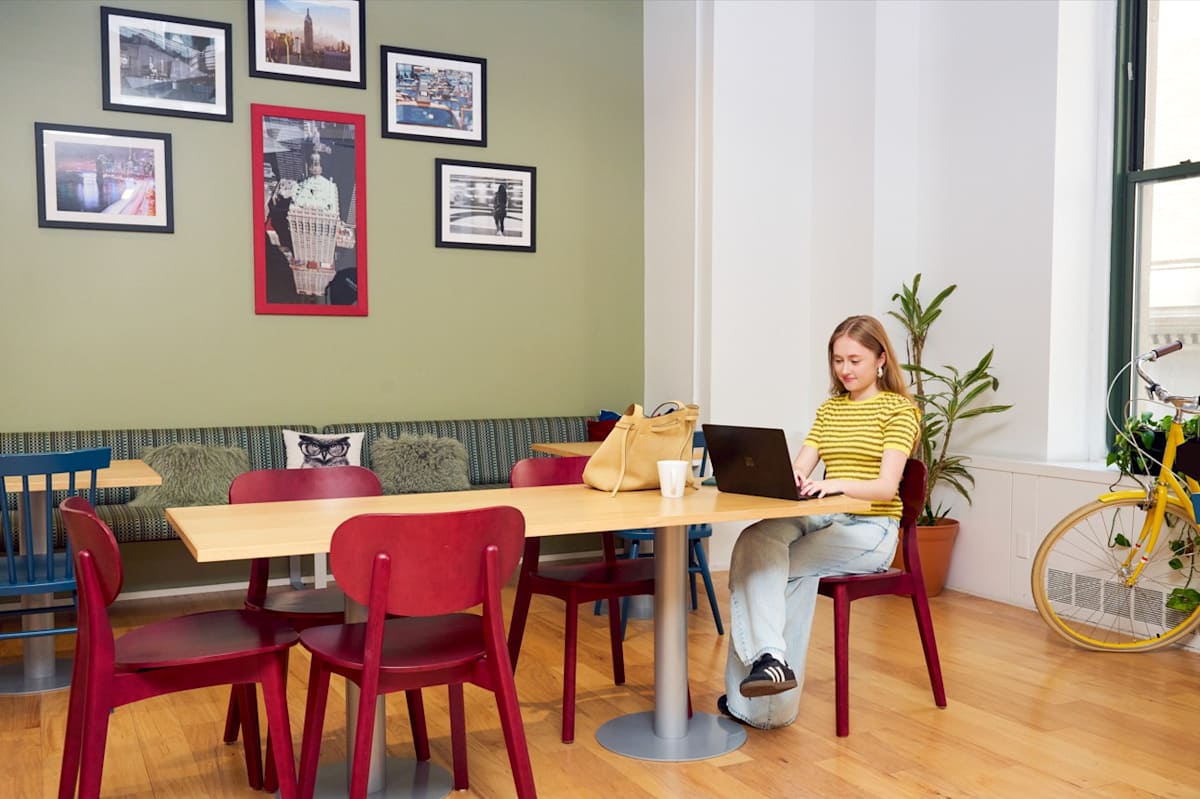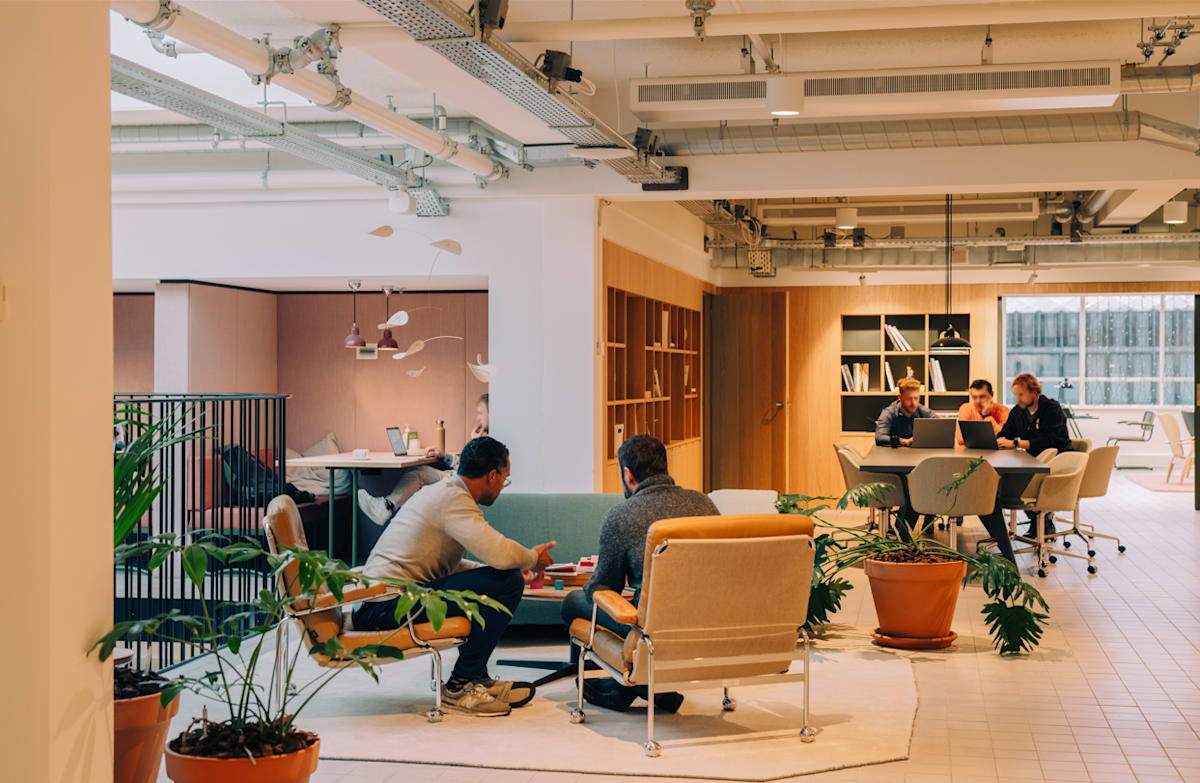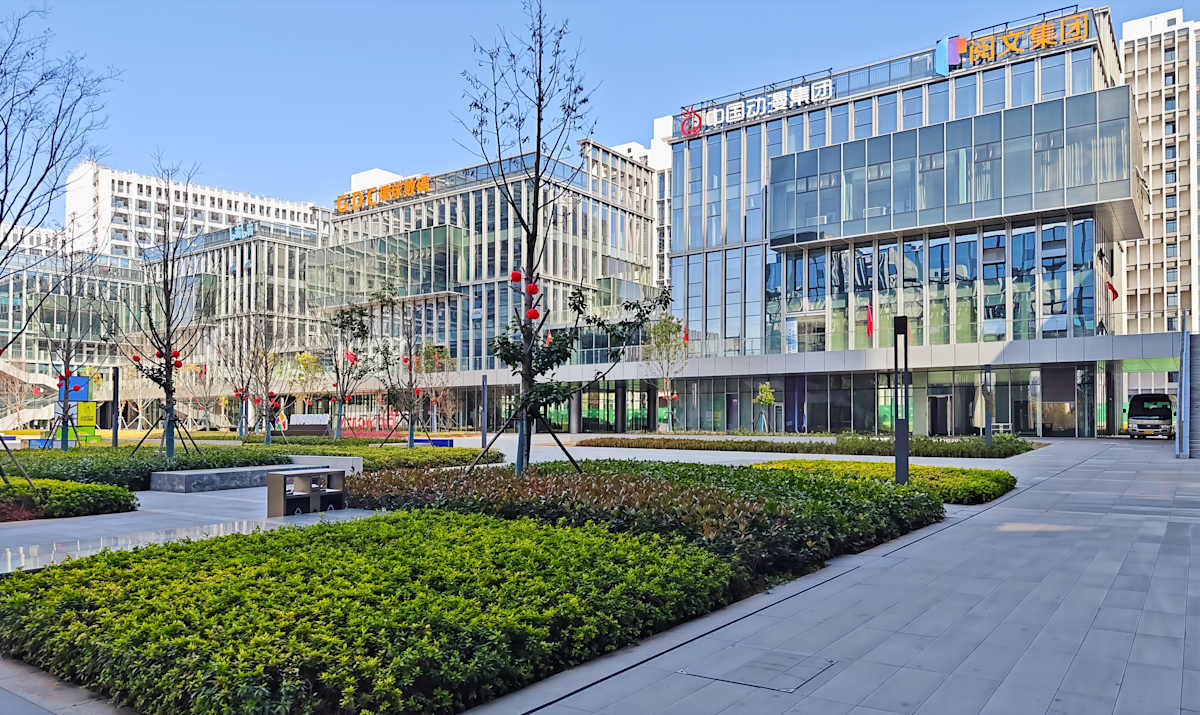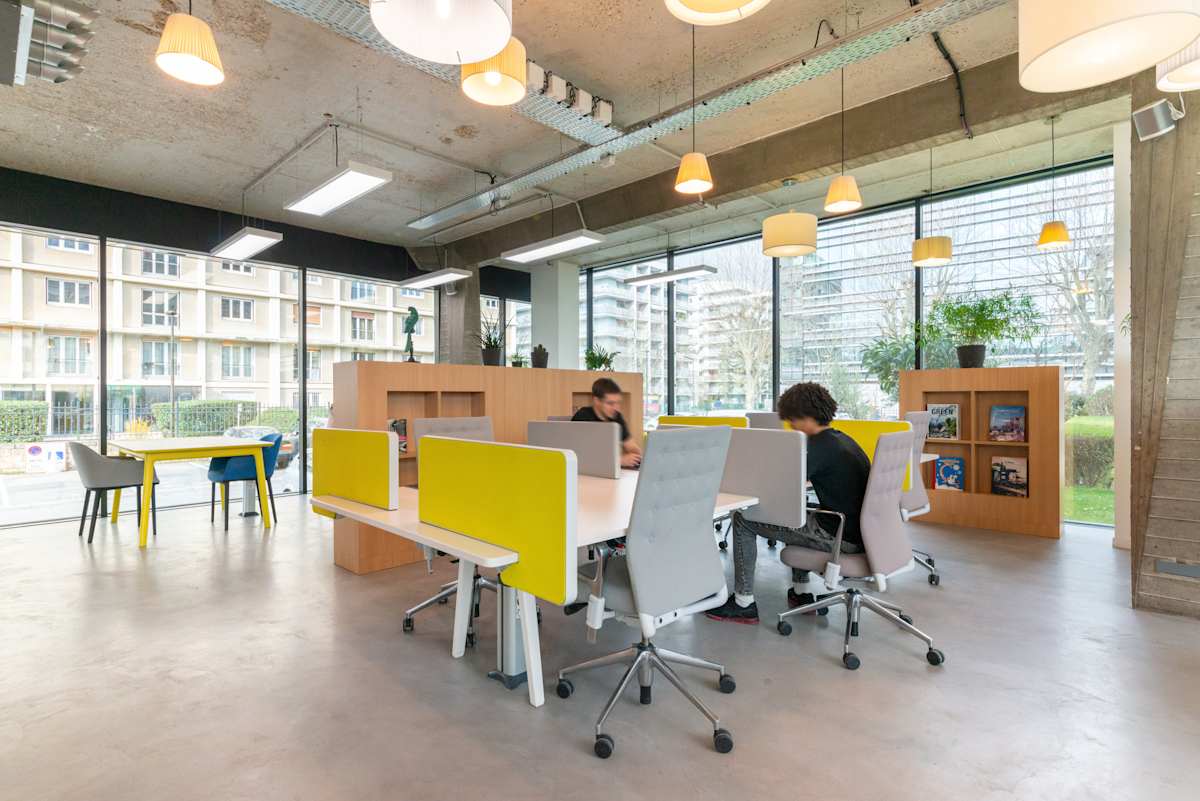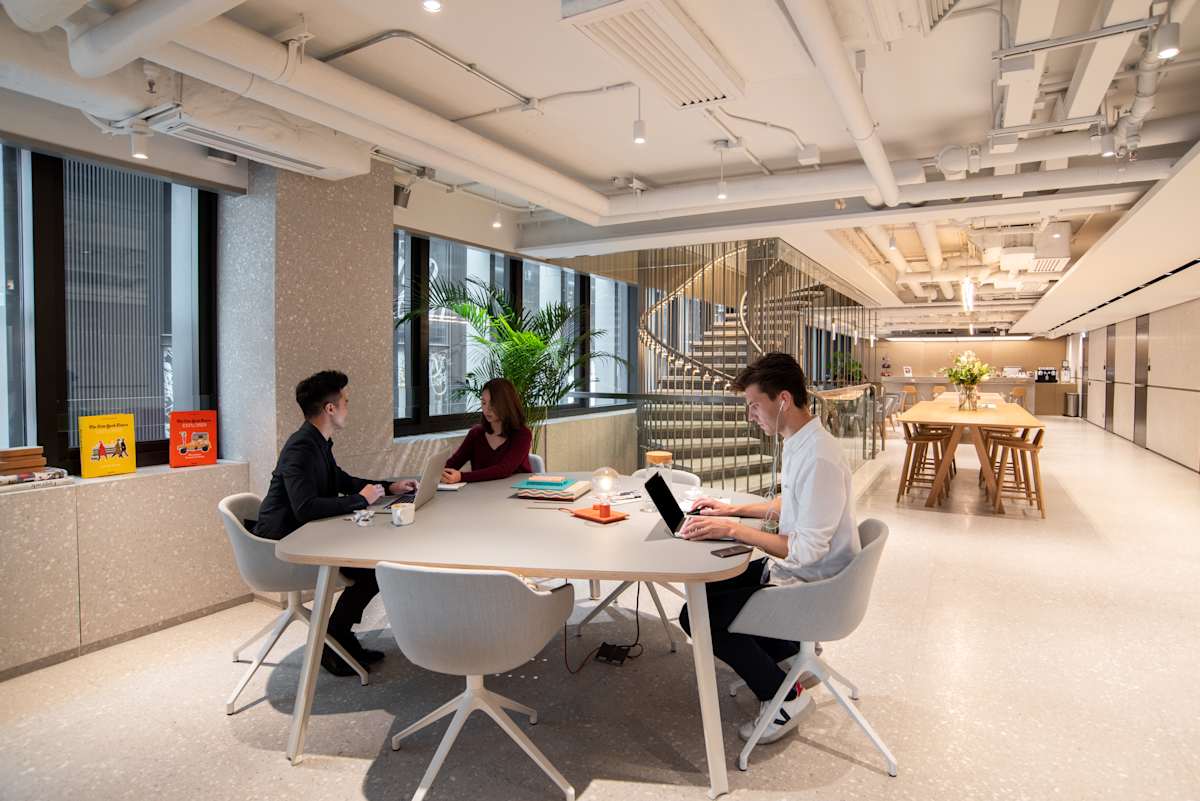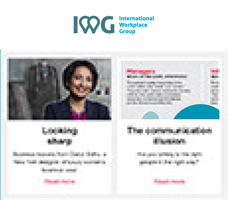- Flexible Chic is the New Black: IWG Research Shows “Quiet Luxury” and “Office Siren” Among Most Popular Workwear Styles of 2025, With Many Gen Z and Millennial Employees Adopting Unofficial “Work Uniforms” for In-office Days
- Top Fashion Stylist Partners with International Workplace Group to Highlight How More Flexible and Hybrid Ways of Working are Shaping Work Attire
- Gen Z and Millennials are Leading the Way in Transforming Workwear, Also Most Stressed About What to Wear to Work, IWG Report Reveals
International Workplace Group (LSE: IWG), the world's largest platform for work with brands including Spaces and Regus, today released findings from its second Workwear Reimagined Report, revealing that employees are seeking outfits that are as flexible as the jobs they hold.
After collaborating in 2023, IWG has once again partnered with renowned New York City-based stylist and creative consultant Diana Tsui to bring the data to life. A stylist for celebrity shoots featuring Ali Wong, Zoe Kazan, and Willem Dafoe, among others, Tsui is the digital director at 10 Magazine USA, a luxury fashion publication. Her work has also appeared in New York Magazine's The Cut, The New York Times, Harper's Bazaar, Elle, and more.
“Younger professionals are leading the way in turning traditional workwear on its head,” said Tsui. “Millennials and Gen Z are the first generations to enter the workplace during a period of unprecedented flexibility, not just in where and how they work, but also in how they present themselves. Now, as employers loosen the reins on previously rigid dress codes, younger professionals are opening the door to a new kind of wardrobe – one that strikes a balance between polish and personality, functionality and flair, and individuality and professionalism, encouraging employees of all ages to wear what they love, while staying within the bounds of what’s appropriate. Though the loosening of rules may seem daunting, it’s also a chance to be creative.”
Five years after the COVID-19 pandemic first disrupted how and where people work, hybrid and flexible work have become a mainstay of the modern workplace. Since IWG’s first Workwear survey was released in 2023, Gen Z has continued to enter the workforce, while millennials have taken the reins as the largest generation in corporate America, and baby boomers are entering the latter stages of their careers. As such, younger professionals – accustomed to increased flexibility, constant connectivity that blurs the lines between work and home, less rigid (or non-existent) dress codes, and embracing individuality and self-expression – have had a significant impact on workwear.
In fact, when surveyed, International Workplace Group (IWG)’s 2025 report found that more than nine in ten (92%) employees working in hybrid roles say it is important that the clothes they purchase are flexible for both work and leisure use, including the nearly half (49%) who say it is “very important,” highlighting that versatility has become key as the lines between work and home continue to blur. Today’s employees most prioritize quality (39%) and whether clothing is comfortable to wear while commuting (32%) when purchasing new pieces.
Still, IWG’s survey also uncovers several gaps in how generations approach their decisions and beliefs about what to wear to work, leaving Gen Z and millennial employees markedly more stressed about selecting outfits for the office and video calls than their older colleagues.
Through research conducted in June 2025 for the IWG report, more than 1,000 U.S. hybrid workers were asked for their insights on current and future fashion trends, what is considered appropriate to wear in a hybrid office environment, and how they've evolved their style to reflect present day attitudes: quiet luxury (18%), commuter-chic* (11%), streamlined staples** and office siren (10%), with the office siren style being significantly more popular among younger employees (11% of those under 60 vs. 3% of those over 60). IWG’s Workwear Reimagined Report brings to life the workwear trends that are making waves in offices across the U.S.
“Long gone are the days of analog working in a faraway city center office five days a week. Today’s corporate environment has evolved post-pandemic and is now more nuanced, with a range of flavors of flexible and hybrid working models, and this evolution has impacted everything from real estate to fashion,” said Mark Dixon, Founder and CEO, International Workplace Group. “Companies are seeing the benefits of flexible work, from cost-savings to employee satisfaction and morale, to environmental impacts – and workers are dressing more comfortably and changing their styles to match.”
Tsui added: “Forget the requisite suit and tie; business casual has become accepted as the norm for many, and employees are more inclined to prioritize outfits that work just as well for weekdays as they do for weekends. This shift not only aligns with the evolving nature of work but is also a budget-friendly option, especially as employees rise the ranks, including in salary. The trend towards prioritizing clothes that reflect one’s personal style makes sense: employees spend so much time at work, it’s a disservice to wear clothes that don’t bring them joy."
Additional survey takeaways include:
- The workwear uniform has become a staple, particularly among younger employees, but it's hardly about fashion.
- More than half (53%) of employees have adopted an unofficial "work uniform" or outfit that they often choose to wear on days they work in an office space.
- This is particularly popular among Gen Z (57%) and millennials (58%), compared to baby boomers (43%).
- Of those who have decided to adopt a “work uniform,” half (54%) say it is to make getting ready more efficient, while 43% say it is to reduce the number of decisions they have to make, and 38% say it is to save money.
- For many employees, the desire to adopt a standard “work look” stems from uncertainty – and even anxiety – about what to wear.
- In fact, employees said they experience stress or anxiety about what to wear to the office seven times per month, with more than one in ten (14%) saying they feel anxiety daily and nearly half (46%) saying at least weekly.
- This is highest among younger workers. On average, Gen Z and millennial employees each reported experiencing stress or anxiety about what to wear on video calls or in the office seven to eight times a month, compared to employees in the baby boomer generation, who reported experiencing it two to three times per month.
- Not surprisingly, eight in ten (78%) are seeking guidance on what to wear at work and on video while working from home.
- In fact, employees said they experience stress or anxiety about what to wear to the office seven times per month, with more than one in ten (14%) saying they feel anxiety daily and nearly half (46%) saying at least weekly.
- For others, the decision may be tied to their wallets.
- Nearly a third (31%) say they're prioritizing clothing that works across office, home, and downtime when shopping, due to current economic conditions.
- Over a quarter (27%) have reduced their spending on workwear.
- Just over a fifth (21%) are increasingly shopping second-hand via resale.
- A workplace divided on what’s safe for work(wear).
- Just over half of respondents (56%) have a clearly defined dress code, with two-thirds of employees (67%) saying their dress code has relaxed in recent years.
- Of those with a dress code, four in five (81%) believe their dress code is strictly enforced.
- While the vast majority (84%) of employees say they are confident their work attire is appropriate for the office, there’s still a notable discrepancy on what is, and isn’t, suitable for work:
- Regardless of their office dress code policy, a majority of respondents agreed that crop tops (73%) and gym clothes (70%) were inappropriate; the jury was more divided on baseball caps and beanies (60%) and shorts (57%).
- Fewer – but still over a third – of employees believe jeans (38%), cargo pants (38%), and sneakers (36%) are inappropriate for work.
- The battle between self-expression and professionalism wages on.
- 75% say their workwear reflects their personal style; however:
- 25% feel their professionalism is judged based on attire (and 24% admit to judging colleagues’ professionalism based on outfits).
- 16% believe they've been overlooked for a job or missed out on a promotion because of their attire; this is particularly true for employees in urban areas (18%), compared to those in rural areas (10%).
- 75% say their workwear reflects their personal style; however:
- Wardrobe opinions – and reactions – vary vastly based on age and tenure.
- 28% of Gen Z say dressing appropriately helps convey power or seniority, more than double the percentage of boomers (11%).
- Two-thirds (65%) of employees with six to ten years of experience dress for the job they want rather than the one they have, compared to 45% of employees with 20 or more years in the workforce.
- A quarter (25%) of employees say their professionalism has been judged based on how they dress, including 31% of Millennials and 27% of Gen Z, compared to just 16% of Boomers.
IWG regularly conducts and commissions research on the future of hybrid and platform working. Most recently, it partnered with engineering consultancy Arup to analyze the impact of these working models on productivity, concluding that by 2030, localized, flexible working could boost productivity by 11% and unlock $566B in U.S. economic growth.
ENDS
Notes to editors
The IWG U.S. Hybrid Workwear Survey was conducted in June 2025 by Censuswide and targeted U.S. workers aged 18 and above. The survey was taken by 1,000 respondents on both mobile and desktop devices.
Photo Credit: Photos by Martin Romero for IWG.
*Commuter chic is defined as cozy but polished styles.
**Streamlined staples was defined to encompass minimalism and capsule wardrobes.
About International Workplace Group plc
International Workplace Group (IWG) is the world’s leading platform for work enabling companies of all sizes to work more productively and profitably. We create personal, financial, and strategic value for the most exciting companies and well-known organizations on the planet as well as individuals and the next generation of industry leaders. All of them harness the power of IWG’s platform to increase their productivity, efficiency, agility, and market proximity.
International Workplace Group’s unrivalled network coverage includes more than 4,000 locations across 120 countries and 83% of Fortune 500 companies are amongst our growing customer base.
Our brands including Regus, Spaces, HQ and Signature serve millions of people, providing professional, inspiring and collaborative workspaces and all our digital services are available via the IWG app.
For more information
Visit iwgplc.com and for more information on partnering with International Workplace Group, see: iwgplc.com/develop-a-location.

